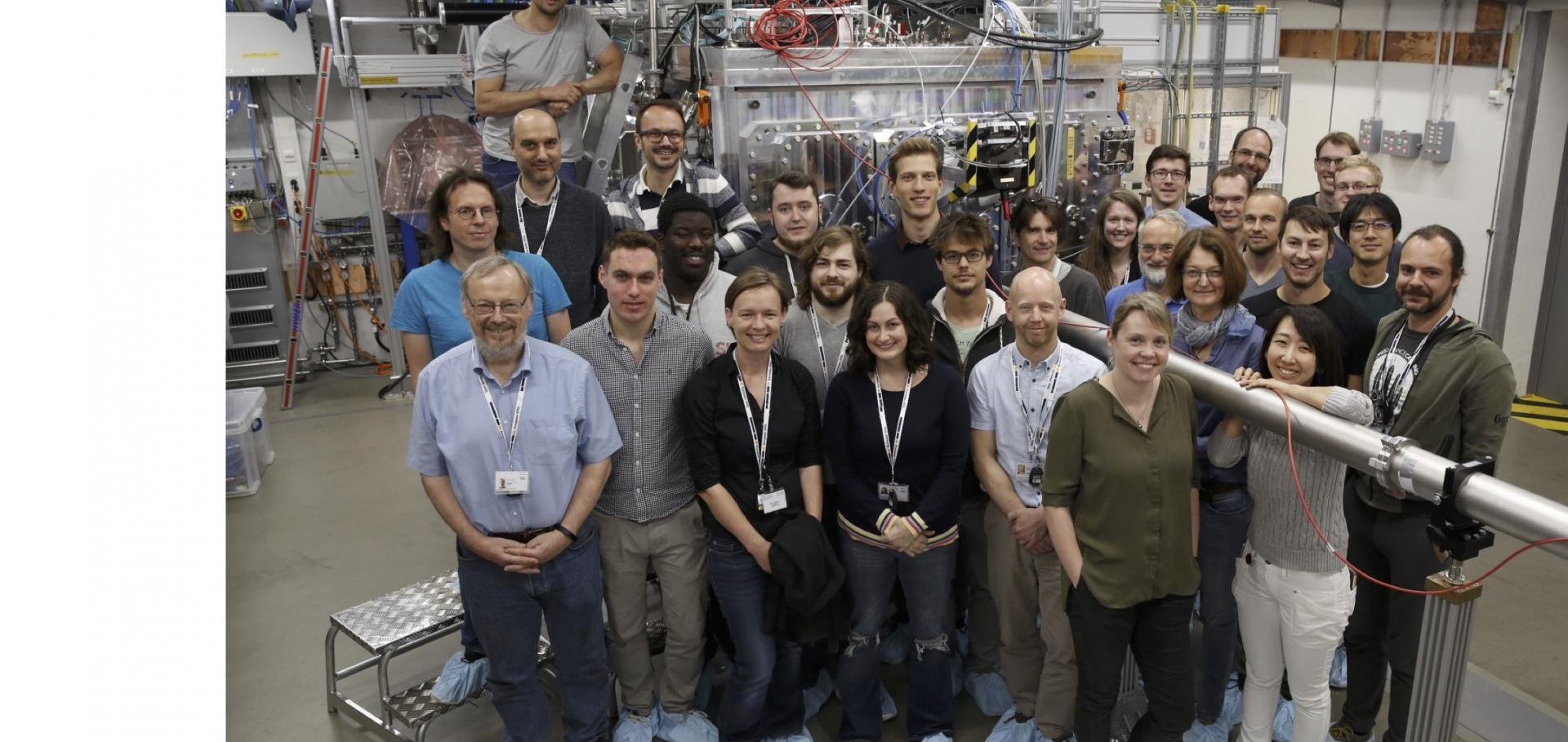Materials science under extreme conditions of pressure and strain rate
METALL MATER TRANS A 35A:9 (2004) 2587-2607
Abstract:
Solid-state dynamics experiments at very high pressures and strain rates are becoming possible with high-power laser facilities, albeit over brief intervals of time and spatially small scales. To achieve extreme pressures in the solid state requires that the sample be kept cool, with T-sample < T-melt. To this end, a shockless, plasma-piston "drive" has been developed on the Omega laser, and a staged shock drive was demonstrated on the Nova laser. To characterize the drive, velocity interferometer measurements allow the high pressures of 10 to 200 GPa (0.1 to 2 Mbar) and strain rates of 10(6) to 10(8) s(-1) to be determined. Solid-state strength in the sample is inferred at these high pressures using the Rayleigh-Taylor (RT) instability as a "diagnostic." Lattice response and phase can be inferred for single-crystal samples from time-resolved X-ray diffraction. Temperature and compression in polycrystalline samples can be deduced from extended X-ray absorption fine-structure (EXAFS) measurements. Deformation mechanisms and residual melt depth can be identified by examining recovered samples. We will briefly review this new area of laser-based materials-dynamics research, then present a path forward for carrying these solid-state experiments to much higher pressures, P > 10(3) GPa (10 Mbar), on the National Ignition Facility (NIF) laser at Lawrence Livermore National Laboratory.Time Resolved X‐ray Diffraction and Non‐Thermal Inelastic X‐ray Scattering
AIP Conference Proceedings AIP Publishing 705:1 (2004) 1387-1390
Simulations of a photopumped X-ray laser using the H-like Cl - Li-like Se scheme
Journal of Quantitative Spectroscopy and Radiative Transfer 83:2 (2004) 203-213
Abstract:
Calculations of the modal photon densities and gain in a photopumped Cl XVII-Se XXXII X-ray laser are presented. In this paper we undertake a realistic simulation of the generation of both Cl and Se plasmas, using a high-power optical laser, which includes radiation from both Ly-α fine-structure components of H-like Cl pumping the 2p3/2-5d5/2 transition in Li-like Se. The calculations are performed in two dimensions in a realistic geometry taking into account plasma gradients. This gives information about the spatial extent and time evolution of X-ray lasing gain on the 5-4 transitions (39.5 Å) in Li-like Se. We find that gain (about 200 cm-1) is expected only when the optical laser includes a pre-pulse. Calculations show that the absorption of pumping radiation in the pumped plasma can reduce the gain by 20%. Time-dependent calculations have shown that the gain is reduced by 30% in comparison to the steady-state calculations. The effect of the spectral profile and self-radiation of 5d5/2-2p3/2 transition in Li-like Se reduces the gain by about 2%. © 2003 Elsevier Ltd. All rights reserved.Enhancement of optically thick to thin line intensities in solar and stellar coronal plasmas through radiative transfer effects: An angularly resolved study
ASTROPHYSICAL JOURNAL 613:2 (2004) L181-L184
Thomson scattering measurements of heat flow in a laser-produced plasma
JOURNAL OF PHYSICS B-ATOMIC MOLECULAR AND OPTICAL PHYSICS 37:7 (2004) PII S0953-4075(04)75560-1


